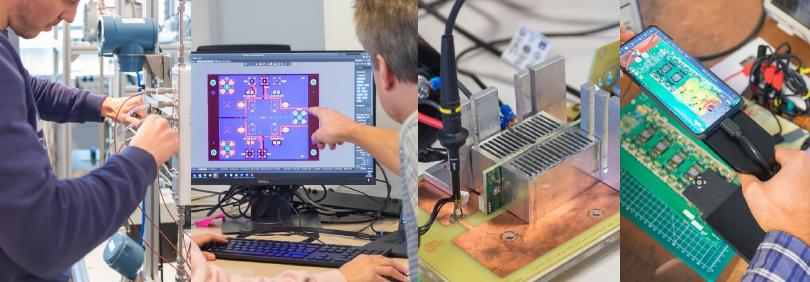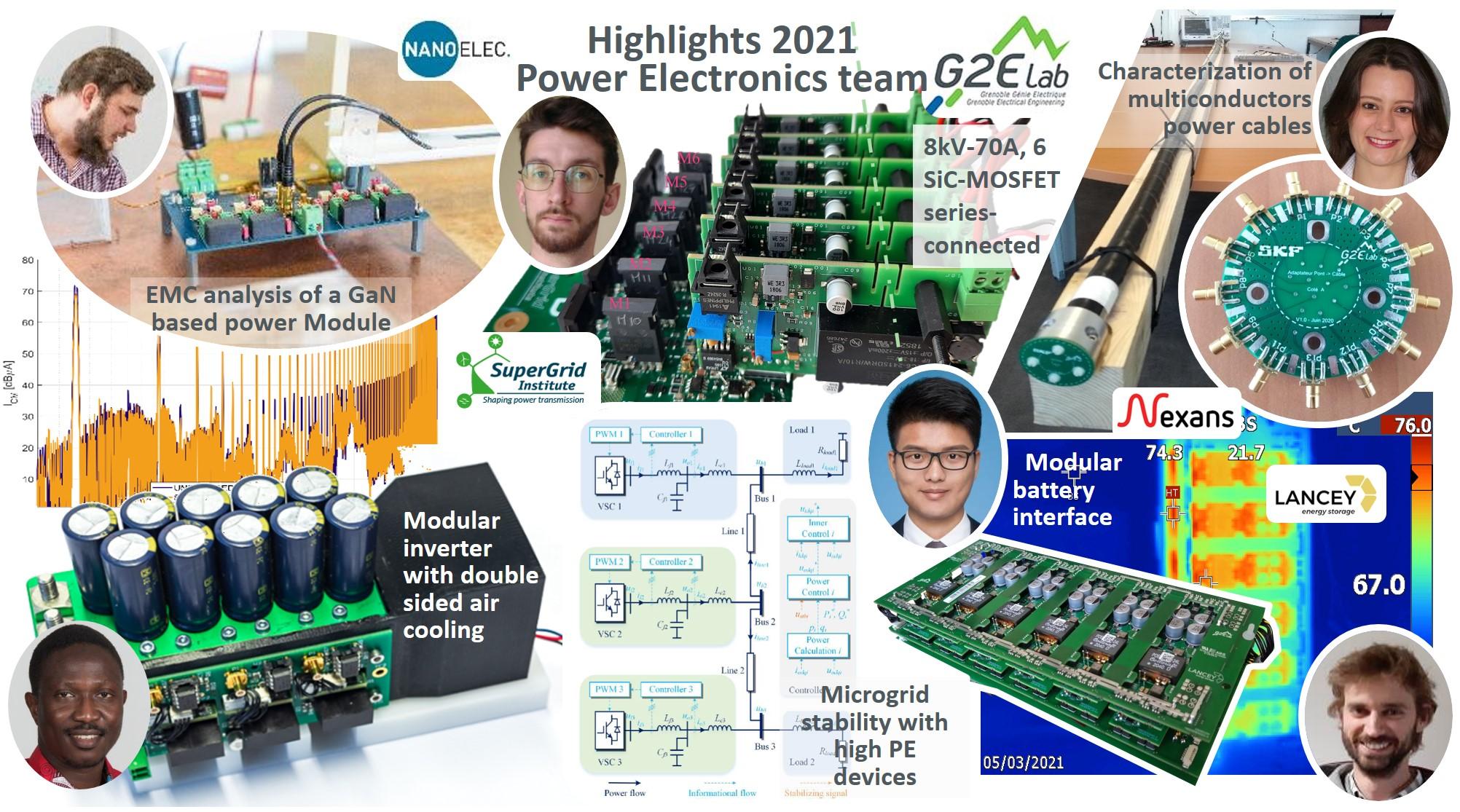EMC analysis of a GaN based power Module : built-in Common Mode emission mitigation
Systematic investigation of the origin of conducted EMI in a GaN power module. Impact of Power layout, Gate circuit layout and heatsink design. Development of a 2.5D concept with built-in EMI reduction.
Involved persons: Pawel Derkacz (Doctorant), Pierre-Olivier Jeannin (MCF UGA), Jean-Luc Schanen (Prof G-INP UGA), Mickael Petit (MCF SATIE), Piotr Musznicki (Ass. Prof Gdansk University of Technology), Piotr Chrzan (Prof Gdansk University of Technology).
SiC-MOSFET series-connected at 8kV-70A, 170V/ns at turn-off and 540V/ns at turn-on
A switching cell with 6 series-connected SiC-MOSFET has been optimized and built (passive equilibrum with RDC circuits). The switching speed reached are 170V/ns at turn-off and 540V/ns at turn-off with a voltage bus of 8kV with a current of 70A.
Involved persons: Cédric MATHIEU DE VIENNE (PhD candidate), Pierre LEFRANC (Associate Prof. G-INP), Pierre-Olivier JEANNIN (Associate Prof. UGA), Bruno LEFEBVRE (Engineer Supergrid Institute), Besar ASSLANI (Engineer Supergrid Institute)
Multiconductor cable parameter extraction and modeling of inductive and resistive parameters
To extract electrical per-unit length parameters from a multiconductor shielded cable, we designed a specific cabling interface with an impedance bridge. A number of compromises had to be made to obtain the best measurement accuracy from this type of equipment, even though no measuring device is really suitable. Analytical-digital modeling with InterconX2D was used to verify the quality of the results obtained.
Involved persons : This work is carried out between G2Elab and SKF involving: A.De Andrade, M.Godi, T.Grossl Bade, A.Derbey, J.M.Guichon, J.Roudet
Modular inverter with double sided air cooling
The inverter is based on the TAPIR technology (compacT and modulAr Power modules with IntegRated cooling). Three elementary switching cells with double sided air cooling (thermal resistance less than 1 K/W) are implemented. These cells incorporate decoupling capacitors as close as possible to semiconductor chips, and have a stray inductance of 1.5 nH. They are therefore adapted to work with high-speed switching devices.
Involved persons: Involved persons in this research activity are : Wendpanga Fadel Bikinga (PhD student), Bachir Mezrag (Engineer), Alexis Derbey (Engineer), Yvan Avenas (Ass. Prof. Grenoble-INP/UGA)
Modelling and stability analysis of a Microgrid with high levels of Power Electronic insertion
The development of AC Microgrids with high insertion of power electronic conversion systems may expose them to new stability issues. The objective of this work was to develop small signal models of conversion systems couple to them of the network elements to determine the causes of instabilities, identify the most critical ones and propose new control loops for the conversion systems in order to ensure the overall stability of the grids.
Involved persons: This work has been made in a co-tutelle PhD between G2Elab and NTU university in Singapore and involved Ke GUO (PhD candidate), David FREY (MCF UGA) and Tang YI (Assoc. Prof NTI Singapour)
Modular multicell battery inverter charger
G2Elab develops an approach to design and manufacture modular power electronics converters based on the association of standardized bricks. This approach was applied to meet the needs of Lancey Energy Storage, which was looking for a modular, scalable battery interface for its main product, an intelligent electric radiator with electrical energy storage. This work has shown that the modular approach can meet a wide range of applications while offering reduced design times.
Involved persons: This work, funded by Carnot Energie du Futur and Lancey Energy Storage, involved André ANDRETA (Post Doc), Yves LEMBEYE (PR UGA), Jean-Christophe CREBIER (DR CNRS).



